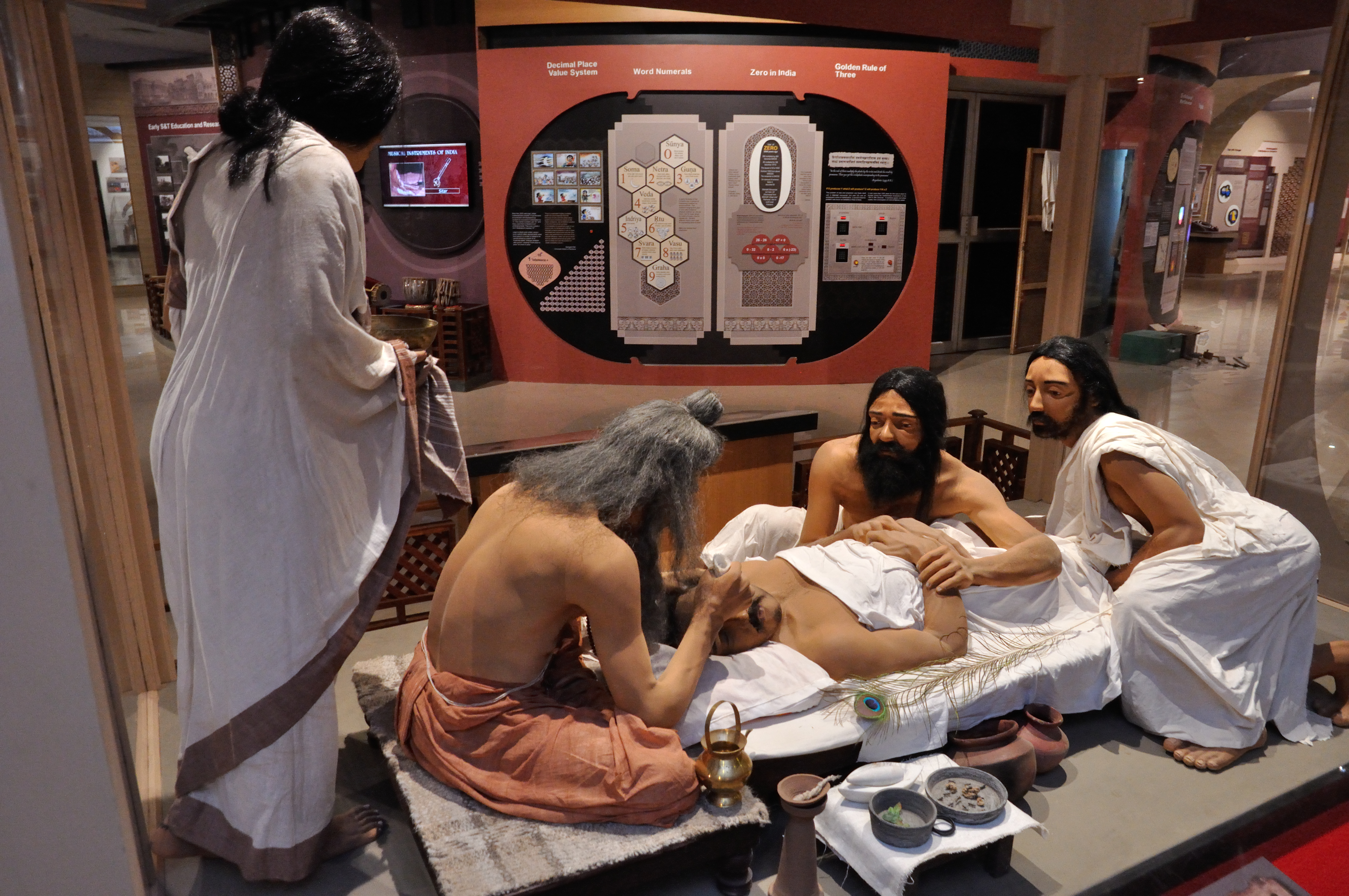
Photo by Biswarup Ganguly. Licensed under the Creative Commons Attribution 3.0 Unported license.
You may have heard before that science owes its existence to Western Civilization. You may have even heard the more specific claim that science owes its existence to Christianity.
But have you heard that for much of recorded history, east Asia was centuries ahead of Europe in math, science, and technology?
For example, China was the first civilization to invent the compass, movable-type printing, and gun powder.[1]
Then consider India. They were performing cataract surgery a couple thousand years ago.[2-4]
And this isn’t even the most impressive part.
More than two thousand years ago, a philosophical school was established in ancient India. This was the Vaisheshika School. They developed the principles of empiricism and rationalism (the ideas that the most reliable approaches to knowledge are through the study of observable evidence and logical inference).[5] They also derived the idea that everything was made of atoms.
Did you know that? Ancient India—more than two thousand years ago—figured out that atoms exist.
You know how they did it?
They conceptualized the idea of stoichiometry. In modern chemistry, stoichiometry is the study of how differences in the macroscopic, observable quantities of a substance (mass, volume) correspond to proportional differences in the number of atoms and molecules in the substance. Take for example two clumps of salt. One weighs a gram and the other weighs two grams. The heavier clump literally contains twice as many atoms as the lighter clump. These comparisons (like the comparison between mass and the number of atoms) are helpful when scientists are figuring out the correct proportions of substances that must be combined to get the desired effect. Suppose you want to set up a chemical reaction between substance A and substance B, and you want the same number of molecules of each substance to react, and substance A has a 50 percent greater molecular weight… then you’ll need to add 1.5 grams of substance A for every gram of substance B, to ensure the numbers of individual molecules remain equal.
The ancient Indians conceptualized this by reasoning that since a rock and the Himalayan Mountains are made of vastly different amounts of the same type of substance, they must consist of a finite number of tiny bits of stuff; in other words, it only makes sense for two things to be made of different amounts of a substance if there is a finite number of pieces involved.[6,7]
Of course, people in India didn’t call them “atoms”—they had their own word for these things—but they basically figured out the concept of atoms.
Fast forward a few centuries, to the period when Europe was transitioning from the Middle Ages to the Renaissance (the fourteenth to sixteenth centuries). Around this same time, the Kerala School of Astronomy and Mathematics was active in India. They not only figured out the value of pi to an accuracy of nine decimals, but they also developed the mathematical concept of the infinite series (a concept Newton would use as a foundation for the development of calculus, centuries later).[8,9] They also developed a heliocentric model of the solar system as far back as the fifteenth century, and developed a description of the orbit of Mercury and Venus that was the most accurate until Kepler came along in the seventeenth century.[10]
Unfortunately, from the Middle Ages until the twentieth century, India has experienced numerous invasions, occupations and colonizations, by the Arabs, Persians, Mongols, Dutch, Portuguese, and British. We will likely never know how far math and science could have advanced in east Asia, had historical and political circumstances provided a more nurturing environment for discovery to thrive there.
But these are some of the places where science blossomed, well before the scientific revolution in Europe. And much of the progress that was made during the scientific revolution in Christian Europe consisted of adopting and building upon the progress made earlier by other cultures… they stood on the shoulders of giants.
Thanks for reading! If you like our articles, please subscribe to be in the know about when new content is posted.
Sources
[1] Kuhn, D. “Reflections on the Current State and Significance of the History of East Asian Technology.” East Asian Science, Technology, and Medicine. 2006 (25): 9-26[2] Roy, P.N. et al. “Cataract surgery performed before 800 B.C.” British Journal of Ophthalmology 1975 (59): 171
[3] Costea, C.F. et al. “A Brief Account of the Long History of Cataract Surgery.” Revista Română de Anatomie funcţională şi clinică, macro- şi microscopică şi de Antropologie (Romanian Magazine of Functional and Clinical Anatomy, Macro- and microscopic and Anthropology). 2016 (XV) 1: 46-52
[4] Lewis, E.W. “Ancient Hindu-Aryan Medicine.” The British Medical Journal. 1934 (2) 3853: 872-874
[5] Phillips, S. “Epistemology in Classical Indian Philosophy“, The Stanford Encyclopedia of Philosophy. Spring 2019 edition
[6] Califano, S. “The concept of atom from the Greek philosophers to the Karlsruhe congress.” Rendiconti Lincei (Lincei Statements). 2010 (21) 3: 253–267
[7] Narayan, R. “Space, Time and Anu in Vaisheshika.”
[8] Roy, R. “Discovery of the Series Formula for π by Leibniz, Gregory, and Nilakantha“, Mathematics Magazine, Mathematical Association of America. 1990 (63)5: 291-306
[9] Joseph, G.G. “Indians Predated Newton ‘Discovery’ By 250 Years.” 2007 Press release.
[10] Ramasubramanian, K. “Model of planetary motion in the works of Kerala astronomers.” Bulletin of the Astronomical Society of India. 1998, (26): 11-31




